#belgian fashion designer
Explore tagged Tumblr posts
Text

Ann Demeulemeester f/w 2019 rtw Creative Director Sébastien Meunier Fashion Editor/Stylist Robbie Spencer Newest Cool
#newestcool#newest cool#ootd ideas#model off duty style#bella hadid outfit#bella hadid aesthetic#vintage outfit#vintage clothes style#style fashion vintage#vintage fashion aesthetic#designer fashionable#designer style#fall outfit idea#edgy fashion outfit#minimalistic aesthetic#minimal fashion#quiet luxury#quiet luxury fashion#quiet luxury style#timeless fashion#stefano gallici#ann demeulemeester shoes#ann demeulemeester boots#demeulemeester#ann demeulemeester official#belgian fashion#belgian fashion designer#antwerp 6#antwerp six#Sebastien meunier
88 notes
·
View notes
Text

Ann Demeulemeester - Feathered Circle, 1990 photographed by Patrick Robyn follow on Instagram for more
#Ann Demeulemeester#feathered circle#1990#fashion#mode#scan#book#belgian fashion#belgian design#antwerp#antwerp six#antwerp 6#Patrick Robyn
1K notes
·
View notes
Text
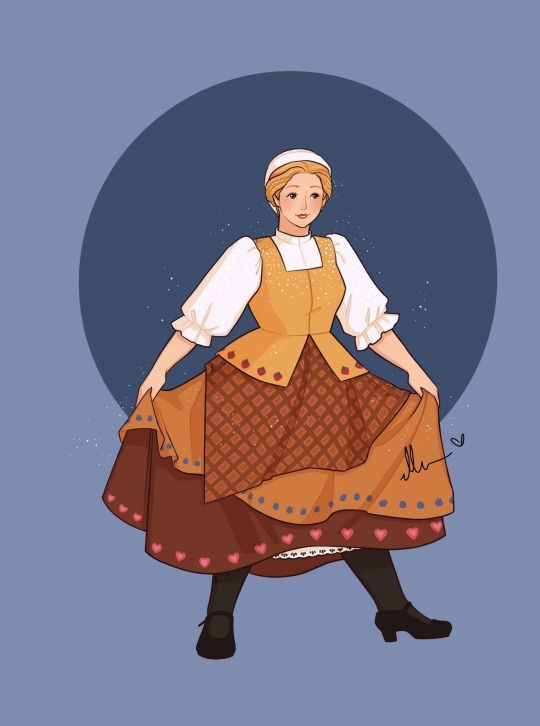
Fooduary Day 2: Belgian Waffles
I am a waffle over pancakes kind of person, which do you favour? Also apparently the theme for this challenge is vague historical research bc I am cutting it close and all the sources disagree, I tried my best to find a sort of national Belgian folk dress but I had a devil of a time finding sources I felt confident about. I found this really fun celebration/folk dance that stuck out to me not only because of the playful energy but because I could find multiple photo references that were clearly of the same event or similar with a clear visual style I could extrapolate from. And the outfits all had layers of skirts/aprons that gave me a delicious opening for layers of waffles of course. The patterns and fruit allusions are decidedly fictional to reference waffle toppings but I think she turned out sweet ;)
I am the artist! Do not post without permission & credit! Thank you! Come visit me over on: instagram, tiktok or check out my coloring book available now \ („• ֊ •„) /
https://linktr.ee/ellen.artistic
#fooduary#art challenge#historical fashion#ellenart#lnart#character design#digital illustration#historically inspired#fooduary2024#belgian waffles#belgian folk dance
309 notes
·
View notes
Text
I want the woman in the clothing, and not the designer who dresses her.
— Ann Demeulemeester, Japanese Fashion Designers: The Work and Influence of Issey Miyake, Yohji Yamamoto and Rei Kawakubo, (2011)
#Belgian#Ann Demeulemeester#Japanese Fashion Designers: The Work and Influence of Issey Miyake; Yohji Yamamoto and Rei Kawakubo#(2011)
25 notes
·
View notes
Text

Le café de la Gaire, Paris
Location of the first ever Martin Margiela show, spring 1989
1988
#fashion#history#maison martin margiela#martin margiela#margiela archive#vintage margiela#maison margiela#paris france#paris#belgian fashion#jenny meirens#fashion history#fashion photography#fashion design
9 notes
·
View notes
Photo
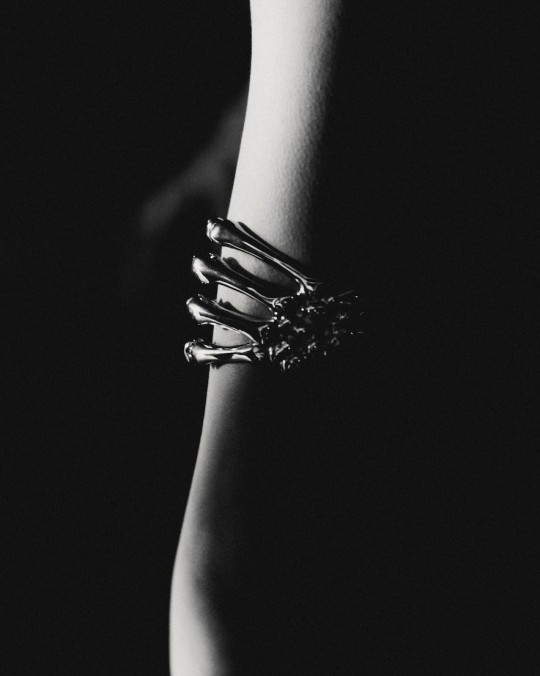
Simons’ Last Ever Namesake Show
Raf Simons Spring/Summer 2023
The Belgian designer’s final Spring/Summer 2023 show – staged at Printworks in London last month – was a sweaty celebration of corporeality. Go behind the scenes with a photo essay by Paul Phung

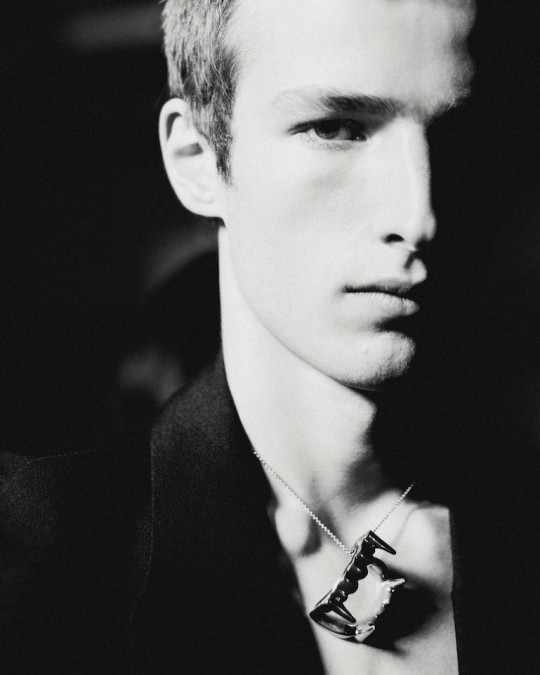
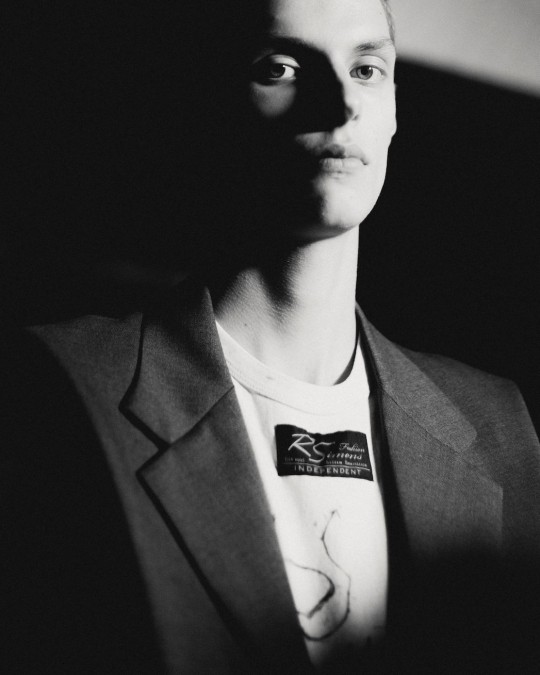

#raf simons#fashion designer#fashion#belgian designer#spring/summer 2023 collection#printworks#london#paul phung#photographer#photo essay
2 notes
·
View notes
Text
He Knows What You'll Wear Next Summer: Inside the Unique Fashion World of Jurgi Persoons
Jurgi Persoons is not a household fashion name but this is only a sign of the times. In a parallel, ideal universe the Belgian designer and educator would have gotten the place he deserves, this of the original voice of the 90s avant-garde scene, probably the last authentic trend the fashion storyline has seen so far. His short run as a designer produced some of the most sought-after items…
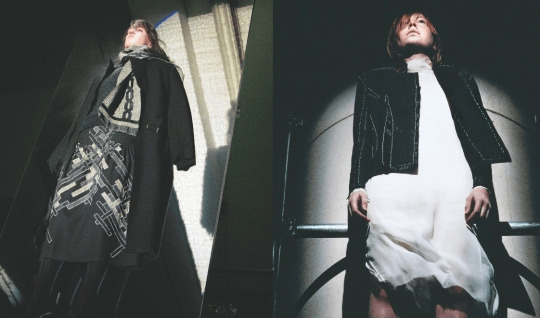
View On WordPress
6 notes
·
View notes
Text
Isabelle de Borchgrave: Pioneer of Paper Fashion Art
Isabelle de Borchgrave: Celebrated Artist of Paper Fashion Isabelle de Borchgrave, a renowned Belgian artist and designer, known for her exquisite life-size paper recreations of historical garments, passed away on October 17 at her home in Brussels. She was 78 years old. The cause of her death was cancer, as confirmed by her son, Nicolas de Borchgrave. Ms. de Borchgrave had already established a…
#art#Belgian artist#Bronzino#cancer#costume design#fashion history#historical garments#Isabelle de Borchgrave#paper fashion#Renaissance fashion#textile designer#Uffizi Gallery
1 note
·
View note
Text
"The most fashionable bathing station in all Europe". British industrialists and American mining investors plotting the colonization of the Congo, while mingling at Ostend's seaside vacation resorts. Extracting African life to build European railways, hotels, palaces, suburbs, and other modern(ist) infrastructure. "Towards infinity!"
---
In 1885, King Leopold II achieved an astonishing and improbable goal: he claimed a vast new realm of his own devising, a conjury on a map called [...] the Congo Free State. [...] [A] fictional state owned by the king, ruled by decree, and run from Brussels from 1885 to 1908. [...] This was [...] a private entrepreneurial venture [for the king]. The abundance of ivory, timber, and wild rubber found in this enormous territory brought sudden and spectacular profits to Belgium, the king, and a web of interlocking concession companies. The frenzy to amass these precious resources unleashed a regime of forced labor, violence [millions of deaths], and unchecked atrocities for Congolese people. These same two and a half decades of contact with the Congo Free State remade Belgium [...] into a global powerhouse, vitalized by an economic boom, architectural burst, and imperial surge.
Congo profits supplied King Leopold II with funds for a series of monumental building projects [...]. Indeed, Belgian Art Nouveau exploded after 1895, created from Congolese raw materials and inspired by Congolese motifs. Contemporaries called it “Style Congo,” [...]. The inventory of this royal architecture is astonishing [...]. [H]istorical research [...] recovers Leopold’s formative ideas of architecture as power, his unrelenting efforts to implement them [...]. King Leopold II harbored lifelong ambitions to “embellish” and beautify the nation [...]. [W]ith his personal treasury flush with Congo revenue, [...] Leopold - now the Roi Batisseur ("Builder King") he long aimed to be - planned renovations explicitly designed to outdo Louis XIV's Versailles. Enormous greenhouses contained flora from every corner of the globe, with a dedicated soaring structure completed specifically to house the oversize palms of the Congolese jungles. [...]
---
The Tervuren Congo palace [...]. Electric tramways were built and a wide swath of avenue emerged. [...] [In and around Brussels] real estate developers began to break up lots [...] for suburban mansions and gardens. Between 1902 and 1910, new neighborhoods with luxury homes appeared along the Avenue [...]. By 1892, Antwerp was not only the port of call for trade but also the headquarters of the most profitable of an interlinking set of banks and Congo investment companies [...]. As Antwerp in the 1890s became once again the “Queen of the Scheldt,” the city was also the home of what was referred to as the “Queen of Congo companies.” This was the ABIR, or Anglo-Belgian India Rubber Company, founded in 1892 with funds from British businessman “Colonel” John Thomas North [...].
Set on the seaside coast, Belgium’s Ostend was the third imperial cityscape to be remade by King Leopold [...] [in a] transformation [that] was concentrated between 1899 and 1905 [...]. Ostend encompassed a boomtown not of harbor and trade, like Antwerp, but of beachfront and leisure [...] [developed] as a "British-style" seaside resort. [...] Leopold [...] [w]as said to spend "as much time in Ostend as he did in Brussels," [...]. Ostend underwent a dramatic population expansion in a short period, tripling its inhabitants from 1870–1900. [...] Networks of steamers, trams, and railway lines coordinated to bring seasonal visitors in, and hotels and paved walkways were completed. [...] [A]nd Leopold’s favorite spot, the 1883 state-of-the-art racetracks, the Wellington Hippodrome. Referred to with an eye-wink as “the king incognito” (generating an entire genre of photography), visitors to the seaside could often see Leopold in his top hat and summer suit [...], riding his customized three-wheeled bicycle [...]. By 1900, Ostend’s expansion and enhancement made it known as “the Queen of the Belgian seaside resorts” and “the most fashionable bathing station in all Europe.” Opulence, convenience, and spectacle brought the Shah of Persia, American tycoons, European aristocrats, and Belgian elites, among others, to Ostend.
---
Leopold’s interventions and the Congo Free State personnel and proceeds played three pivotal and understudied roles in this transformation, all of which involved ABIR [British industrialists].
First, it was at Ostend that an early and decisive action was taken to structure the “red rubber” regime and set it in motion. In 1892, jurists such as [E.P.] had ruled, contravening [...] trade laws, that the king was entitled to claim the Congo as his domanial property [...]. Leopold [...] devised one part of that royal domain as a zone for private company concessions [...] to extract and export wild rubber.
Soon after, in 1892, King Leopold happened to meet the British “Colonel” John Thomas North at the Ostend Hippodrome. North, a Leeds-born mechanic [...] had made a fortune speculating on Chilean nitrates in the 1880s. He owned monopoly shares in nitrate mines and quickly expanded to acquire monopolies in Chilean freight railways, water supplies, and iron and coal mines. By 1890 North was a high-society socialite worth millions [...]. Leopold approached North at the Ostend racecourse to provide the initial investments to set up the Anglo-Belgian India Rubber Company (ABIR). [...]
---
One visible sign of Ostend’s little-known character as Congo boomtown was the Royal Palace Hotel, a lavish property next to the king’s Royal Domain, which opened in 1899. With hundreds of rooms and a broad sweep of acreage along the beachfront, the palace “occupied the largest space of any hotel in Europe.” [...]
King Leopold met American mining magnate Thomas Walsh there, and as with North, the meeting proved beneficial for his Congo enterprise: Leopold enlisted Walsh to provide assessments of some of his own Congo mining prospects. The hotel was part of [...] [a major European association of leisure profiteers] founded in 1894, that began to bundle luxury tourism and dedicated railway travel, and whose major investors were King Leopold, Colonel North [...].
At the height of Congo expansionism, fin-de-siècle Antwerp embodied an exhilarated launch point [...]. Explorers and expeditioners set sail for Matadi after 1887 with the rallying call “Vers l’infini!” (“towards infinity!”) [...].
---
Text above by: Debora Silverman. "Empire as Architecture: Monumental Cities the Congo Built in Belgium". e-flux Architecture (Appropriations series). May 2024. At: e-flux.com/architecture/appropriations/608151/empire-as-architecture-monumental-cities-the-congo-built-in-belgium/ [Bold emphasis and some paragraph breaks/contractions added by me. Italicized first paragraph/heading in this post was added by me. Presented here for commentary, teaching, criticism.]
#tidalectics#ecology#multispecies#abolition#this full article has far more info about leopolds obsession with opulence and all the many infrastructure projects in belgium he sponsored#full article also expands more on congolese art and anticolonial art projects that criticize belgian architecture#eflux did several articles focusing on anticolonial responses to belgian extraction and art noveau and modernist architecture#including a piece on spectacle of belgian worlds fair and human zoos#silverman has very extensive research history#ecologies#geographic imaginaries
130 notes
·
View notes
Text

Ann Demeulemeester s/s 1996 rtw Creative Director Ann Demeulemeester Model Esther de Jong Newest Cool
#Esther de jong#90s runway#90s look#90s model#90s editorial#supermodel era#supermodel status#original supermodel#ready to wear collection#runway details#runway style#runway looks#runway collection#ann demeulemeester#stefano gallici#ann demeulemeester shoes#ann demeulemeester boots#demeulemeester#ann demeulemeester official#belgian fashion#belgian fashion designer#antwerp 6#antwerp six#- goth#gothic fashion#goth glam#goth aesthetic#goth style#goth look#newestcool
78 notes
·
View notes
Text
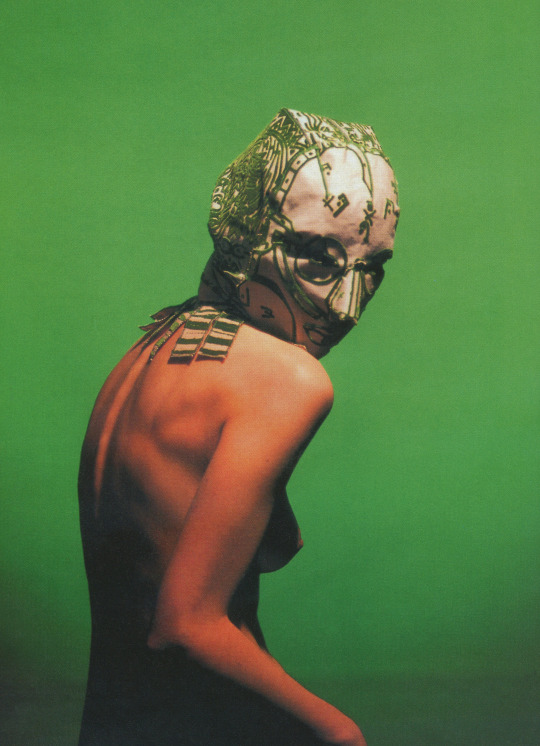
Katarina Van Den Bossche for the Belgian magazine BAM issue 5, 1992 follow on Instagram for more
302 notes
·
View notes
Text
Grace Kelly*: From Style Icon To Royal Bride
Okay so actually there are two books about Grace Kelly’s wardrobe and impact on fashion, both written by the same person: H. Kristina Haugland. One is called Grace Kelly Style, written for the Victoria and Albert Museum’s 2010 exhibit “Grace Kelly: Style Icon”. It’s focused on her fashion evolution based on her life stages.
The second book, Grace Kelly: Icon of Style to Royal Bride, provides insight to the titular wedding outfit, starting with the background and lead-up, then going in-depth into the construction and transport. There’s even a diagram of how the dress was made at the back.
So, the reason I read both books is because I could not figure out what “rose point” lace** meant. I rarely to never see that referenced in lace books, and I double checked the indices of several books I own to make sure. I thought it was a familiar term I might have heard elsewhere in that (and don’t get upset at me here) the UK and US often just… make up new names for things…? Things that already had names? So I was chasing down this term in 20th century US sources and it made no sense. Some sources said it’s Italian and some sources said Belgian. I’m pretty certain everyone was just a tad confused.
And that extended to Grace Kelly’s wedding dress. Everyone agreed the lace was needlemade, most that the MGM dressmakers had reembroidered it***, and several sources repeated it was a hundred and twenty five years old when she wore it and basically I needed a professional.
Luckily!!! Someone cited this book!
And Haugland acknowledges it’s confusing!!!
So, “rose point lace” is actually an American name for point de gaze, a lace I am intimately familiar with.
She also calls out MGM for saying the lace was 125 years old. Point de gaze didn’t debut commercially until the mid-1800s, and that includes the 3D elements and the famous rose patterns (I have read documents related to this but I don’t want to dig them out because it’s really mundane “the queen of such-and-such, so-and-so is coming to support us” letters—they really wanted to impress).
And I’m pretty sure I know where the initial confusion because of a book Haugland herself cites. Unfortunately, it doesn’t solve my confusion. So.
In Icon of Style to Royal Bride, Haugland quotes Marian Powys’s Lace and Lace-Making****. I, of course, immediately read that too. It is the lace book of the mid-20th century. In it, she writes on rose point lace (point de gaze to me) and then… point de venise a rose, which I have seen shortened as ‘point de rose’ (and had not the faintest clue what they could possibly be talking about). Obviously, confusing, and probably why some sources reported the lace as Italian.
But this does not answer my question! Because Powys also describes both Belgium and Italy as copying the popular old point de gaze patterns and selling them. And given MGM likely sourced the lace through dealers while knowing very little about handmade lace, who knows.
However.
However, in Style Icon to Royal Bride, an anecdote given about Grace Kelly’s shoes (decorated with the same lace [sort of]) does lead me to believe the lace was likely antique—or at least, old.
So, after reading three (3) books(!!!), I have to satisfy myself that the lace was probably(?) Belgian and probably(?) antique. But I do know more about the history of garment conservation and exhibition now, so that’s pretty cool regardless. I also really liked the insights into the design process, the timeline, and the construction of the dress.
Would definitely recommend if you like knowing semi-obscure trivia, Hollywood celebrities, have ever wanted to copy Grace Kelly’s wedding dress, fancy dresses or falling down rabbit holes.
Here’s one of the glossy photos from inside the book

P.S. I looked into this to try and find out if there really was priceless lace floating around Old Hollywood. It definitely needs more research but initial conclusions are ‘not likely.’ The reason Grace Kelly was gifted such an over-the-top sensational dress is she was becoming a princess while still under contract with MGM—imagine the publicity if they could convince a royal to come back to movie making. It definitely did pop up occasionally but it seems like it was more an East Coast socialite thing—for example, Jacqueline Lee Bouvier wore her grandmother’s antique point de gaze veil (sometimes provenance is certainty) in her wedding to future President Kennedy.
Footnotes:
*Grace Kelly was a movie star and then married the Prince of Monaco (the sovereign ruler, because principalities are weird).
**needle lace is an entirely handmade fabric that involves stitching buttonholes into patterns. It’s also called point lace, needlepoint lace, etc—primarily to separate it from bobbin lace, which similarly is a completely handmade fabric woven via braiding, and other types of knotted needle laces, which are generally significantly more hardy.
The desirability of needle lace is usually its delicate, gauzy appearance.
***while needlerun lace (hand embroidery over machinemade lace to make it look closer to handmade) was fairly common at the time, being able to convincingly embroider or make needle lace was almost as big a deal in the 20th century as it is now. Especially by a major movie studio like MGM. What the embroiderers did, according to the book, is disassemble the lace, fit it to the patterns, and sew it on another fabric backing—where it was reassembled to cover the seams. Which is much, much easier than the reports (if anyone asks I will explain why).
****Powys’s 1953 book on the subject of lace defined many terms I see used in literature about lace that I never see lacemakers themselves use. And her glossary is in the front!!! And she gives her process to making needle lace in the back!!! I include this because there’s a general misconception that books on lace (needle lace especially) only exist up to 1905 or so, with a smattering published in the 1980s. However, I’ve tracked down needle lace books from the late 19th century to the present. You need to know what you’re looking for.
Additionally, reading Powys is when I realized Grace Kelly’s civil ceremony dress was “needlerun”—I was having a hard time squaring it with methods of manufacturing.
EDIT: please ask me any questions for anything I missed, I wasn’t expecting the original post to break double digits and it kind of threw me for a loop (I will make sure to have a draft for the next time that happens) and then I had issues with Tumblr
20 notes
·
View notes
Text
I’d like to cut an attitude into clothes.
— Ann Demeulemeester, Japanese Fashion Designers: The Work and Influence of Issey Miyake, Yohji Yamamoto and Rei Kawakubo, (2011)
#Belgian#Ann Demeulemeester#Japanese Fashion Designers: The Work and Influence of Issey Miyake; Yohji Yamamoto and Rei Kawakubo#(2011)
30 notes
·
View notes
Text


XXXL VEST WITH T-SHIRT, 1991 Cotton, nylon
DESIGNER Martin Margiela. Maison Martin Margiela, Paris
PHOTOGRAPHY Tatsuya Kitayama, Paris
Belgian designer Martin Margiela was a leader of the "deconstructionist" movement that reshaped the international fashion world in the 1980s and 1990s. Margiela is known for taking the generic elements of fashion and reconfiguring their scale, function, and physical structure. Here, an enormous t-shirt-larger than any human being—is worn beneath a fine net sheath.
As the excess skin of the t-shirt swirls around the body, a nascent classicism emerges out of base, industrial materials.
#xxxl vest with t-shirt#maison martin margiela#tatsuya kitayama#martin margiela#fashion design#pheere#library#skin: new design organics#ellen lupton
17 notes
·
View notes
Text

Mlle Jane Marnac in evening gown by Baron Christoff von Drecoll, Photo Félix, Les Modes Cover, June 1911
Women's Fashions Of The 1910s
Front cover from Les Modes showing Belgian actress Jane Marnac wearing a dinner gown by designer Drecoll, the fitted gown is in gold satin with a white lace overlay on the high empire line bodice, the neckline plunges to a low V and is secured with a diamond brooch, she wears a long string of pearls and carries a feathered fan, Paris, France, 1911. (Photo by Paul Popper/Popperfoto via Getty Images).
#les modes#1911#cover#drecoll#les modes cover#illustration#1910s fashion#dinner dress#evening gown#vintage#cover illustration#cover art#jane marnac#mlle marnac#actress#baron christoff von drecoll#felix#les modes 1911#june issue#june 1911#1911 illustrations#art#painting#1910s gowns#1911 illustration#fashion illustration#summer fashion#antique#chic#parisian chic
118 notes
·
View notes
Text
Types of People: Humans I love(d).
The Little Sister: Flared pants and platform Doc Martens. Delicate gold earrings, perfect skin and bright eyes. Flat white coffee or matcha latte. Bagels. Techno music and poetic folk songs. Paris. Polaroids. Quick witted and humorous. Dachshund. Shabby sweatpants and runway fashion. Floppy ears. Massages. Banana bread.
The Little Brother: Street smarts. Perfect driving. Anything but resentful. Stained sweatshirt and Burberry Trenchcoat. Photography. Basketball. Chill. Humorous. Infuriating but so so lovable. Teacher. Surprisingly insightful. Advisor. Confident and cocky. Beer and Barbecue sauce. Coffee mugs. South Africa. Spontaneity. Arrogant.
The Father: Golden morning light. Expensive camera equipment and cheap gas station coffee. Model trains. Thick wool sweaters. Cologne and scratchy cheek kisses. Blankets of snow. Hares. Holly Cole and The Boss. Hilarious. Anything but an experimental eater. Spaghetti Bolognese and Stollen. Vibrant forest. Red wine and milk chocolate. The Musician.
The Mother: Crime novels. Warm soft hugs. Silent laughter, red cheeks, tears in eyes. Surprises. Book smarts. Perseverance. Organised and focused. Strong black tea and dark seedy bread. Elephant whisperer. Insomnia. Open mindedness and indignation. So supportive. Manners. Nice porcelain. Hydrangeas and roses. Plum jam. Perfect pedicures.
The Older Sister: Long walks. Control freak. Forests. Fantasy worlds. Diving head first into a swimming pool. Daydreaming. Curly hair. Pretentiousness. Everyday magic. Books. Tiny handwriting. Long wool coats. Mind all over the place. Excitement. Cold hands and warm sweaters. Hopeless romantic. Owls. Greek mythology. Trivia. Ink. Details. Cappuccino with cinnamon and cocoa.
The Musician: Delicate fingers plucking at Cello Strings. White chocolate. Knitting. Sarcasm, emotionally distant. Squirrels. Autumn walks, rain, graveyards. Audiobooks. Norway. Engineering, technical drawings, ballpoint pens. Morbid curiosity.
The Fighter: Clean and crisp white sheets. Determined. Cold brew coffee. Fragrant white Hyacinths blooming on a windowsill. Toned shoulders. Emotional intelligence. Brutal honesty. Philosophical books. Lab coats. Excellent listener. Pep talks and feminism. Triathlon. Anything to achieve your goals. Knowing smirks. Moscow mules. Reading not for pleasure but learning (or the pleasure of learning?)
The Scientist: Obscure inside jokes. Freckles. Dancer. Questionable cook, decent baker. Physics. The Smartest. Elegant movements. Thrifted knitted jumpers. Multicoloured nail polish. Poetry. Eccentric. Debating society. Entire page covered in the tiniest notes. Funky coffee mugs. Books picked off the street.
The Scout: Strong moral compass. Scouts honour. Massive Fantasy novels. Guffawing. Tie dye T-shirts and shining blue eyes. Ships. Camping. Adventure. Overwhelmingly talkative, but not in a bad way. Carefree. Trinkets and bonfires. Dunes and seafoam. Orange.
The Travel Companion: Political. Volunteering. Singing flatly but passionately. French patisserie. Colourful felt. Opinionated. Exuding coolness on the dancefloor. Dark green. Finland, pine forests and smoked salmon. Tents. Virology. Hypochondriac. Experimental cooking. Mushrooms. Aromatic black tea.
The Oldest Friend: Books over books over books. Deep talks. Old friends. Yoga. Peppermint tea. Sky blue. Memories. Therapy. Snowboarding. Pixie cut. Relaxation, taking it easy. Veganism. Dog person. Gender Studies. Runner. Coming back stronger and gentler than ever. Gift exchange. Solo holidays. Empathy.
The Exchange Student: Fast talking, Aussie accent. Oversized sweatshirts. Oat milk. Glowing skin. Sea foam. Pearls and silver. Fresh tulips. Warm summer days. Sunny side up eggs, drizzled with golden honey. Pool balls clicking. Hot chocolate. Belgian beer. Dog person. Silver rings, one on each finger. Tan lines.
The Designer: Linocut. Wide pants, black turtleneck. Oat milk. Creativity. Graphic design. Nose ring. Mullet. Enjoying and celebrating the beautiful things in life. Analogue photography. Coffee is a science. Patient. An artist. Berlin. Tortoiseshell glasses.
The Certified Badass: Bouldering. Fine line tattoos and silver ear piercings, too many to count. Black velvet. Remote island. Catto content. Road trips, lush forests, sea waves. Platinum hair. Strong. Blue eyes, white liner. Island. Thick knitwear and combat boots. Tarnished silver jewellery. Dune grass.
17 notes
·
View notes